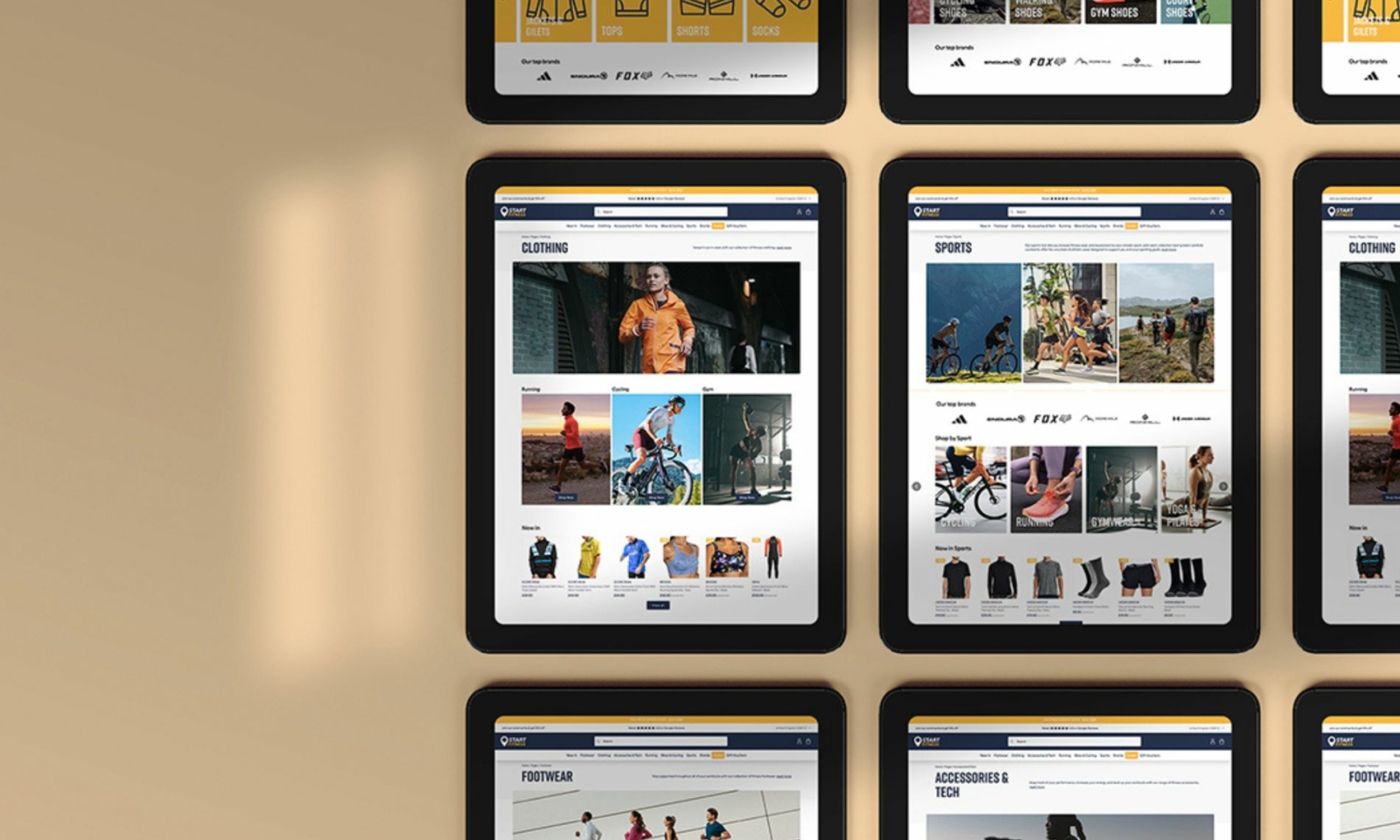The design of your Shopify store plays a crucial role in attracting and retaining customers.
A beautifully designed website can enhance user experience, boost conversions, and ultimately drive revenue. However, as trends change and technology advances, it’s essential to periodically evaluate whether your Shopify store needs a refresh.
In this blog, we run through the signs that indicate it might be time to redesign your Shopify store.
Why do I need to redesign my Shopify store? 5 signs it’s time
1. Low conversion rates
If you’re driving traffic to your website but not seeing conversions, it could be due to design-related issues. Take a deep dive into other metrics such as bounce rates, time spent on site and abandoned basket rates to identify areas for improvement. Your redesign should focus on optimising conversion paths, improving product presentation, and simplifying the checkout process can help to increase conversion rates and generate more sales.
2. Failing speed & performance
Your Shopify’s store design affects more than just the aesthetics of your website, it can have a detrimental effect on site speed and overall performance, too. We see these types of problems a lot with pre-built Shopify themes. While out-of-the-box templates are a convenient option for new or smaller businesses, many reach a point where a pre-built theme begins to fail on speed, performance and customisability. Plus, it may be difficult to effectively showcase your brand through every step of the user journey when using a pre-built theme.
3. Evolving brand identity
Speaking of branding, have you recently undergone a full rebrand for your business? As a business grows and evolves, brand identity may change as well. If your Shopify store’s design no longer reflects your brand’s values, personality, or messaging, it’s time for a redesign to realign with your current brand identity. Consistency across all touchpoints strengthens brand recognition and fosters trust with your audience.
4. Non responsive design
Mobile commerce is here to stay, with the majority of online transactions now taking place on mobile and tablet devices. Having a mobile-responsive website is not optional. If your Shopify store isn’t opimised for mobile devices, you’re going to lose a significant portion of potential customers, and should begin the process of redesigning your store sooner rather than later.
5. Growing pains
When trying to grow and scale your ecommerce business, you may find that your website is struggling to keep up. A custom Shopify theme can be customised to include bespoke functionality without the need to rely too heavily on third-party plugins that will ultimately cause more problems further down the line. If updates to the front end of your website are becoming laborious and time-consuming to achieve, it’s probably time for a professional redesign that incorporates your business’s specific requirements from the start.
How can I improve my Shopify website design?
So you’re seeing the signs – what can you do about it? Here are a few key starting points to consider.
Go custom
First things first, you need a custom Shopify theme. If you don’t have any experience with Shopfiy’s Liquid template language, you’ll need to work with a developer on this, but it’s absolutely necessary in order to have full control over the look and functionality of your website.
Product page templates
Product pages are arguably the most important part of any ecommerce website – this is where your website users convert, after all. Work with your Shopify developer to design a series of product page templates to ensure you’re showcasing your products, highlight the key selling points and giving maximum visibility to your potential customers.
Streamline navigation
The menu and navigation of your website needs to be streamlined so that users can easily find the products they’re looking for in the fewest number of clicks. If your product catalogue is extensive, for example you stock products from a large number of brands or across a variety of categories, this can be particularly tricky to master. Mega menus are an effective way to structure your website’s navigation, allowing you to display all of the collections and product types you offer in a way that’s easily digestible.
Time for a refresh? Our Shopify developers can work with your team to design and develop a bespoke storefront from scratch. Send us a message to get started.

